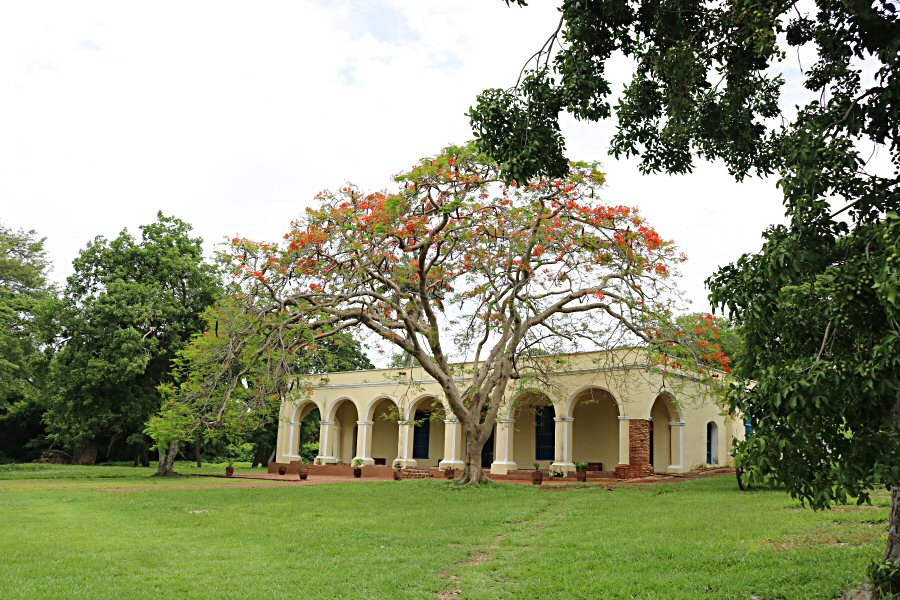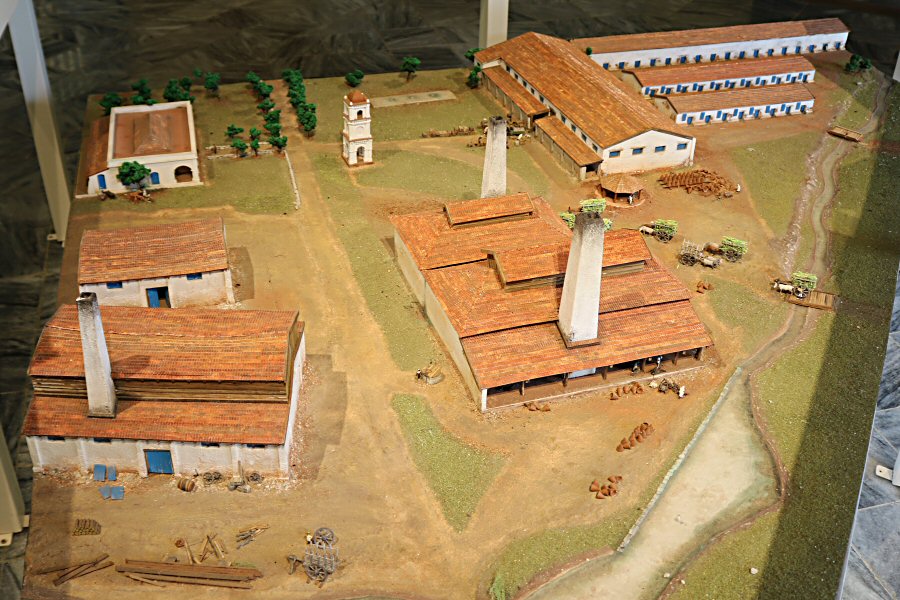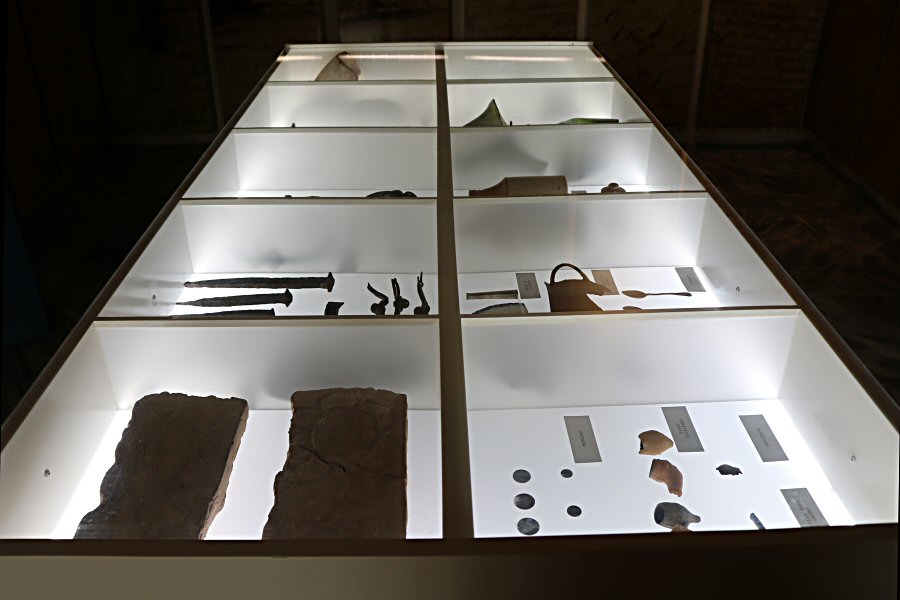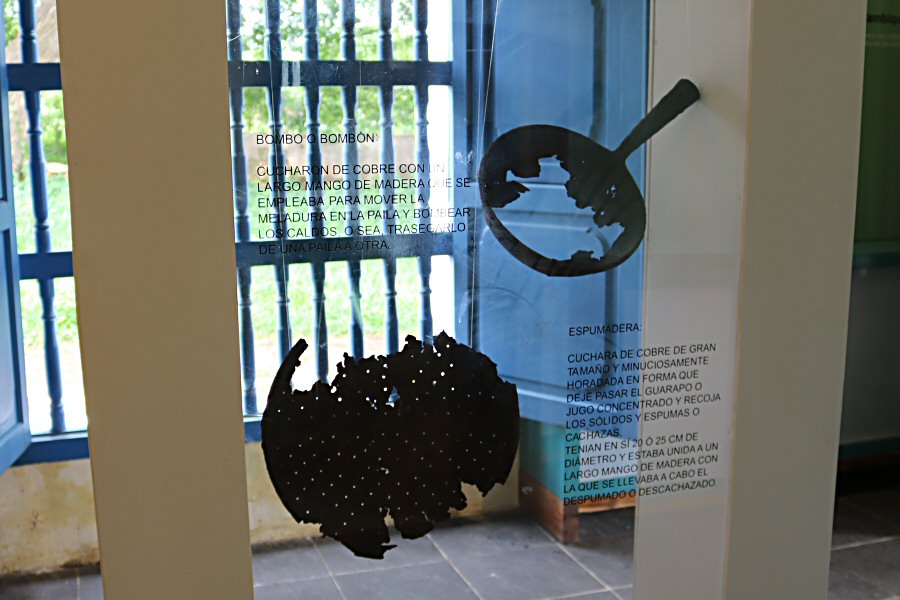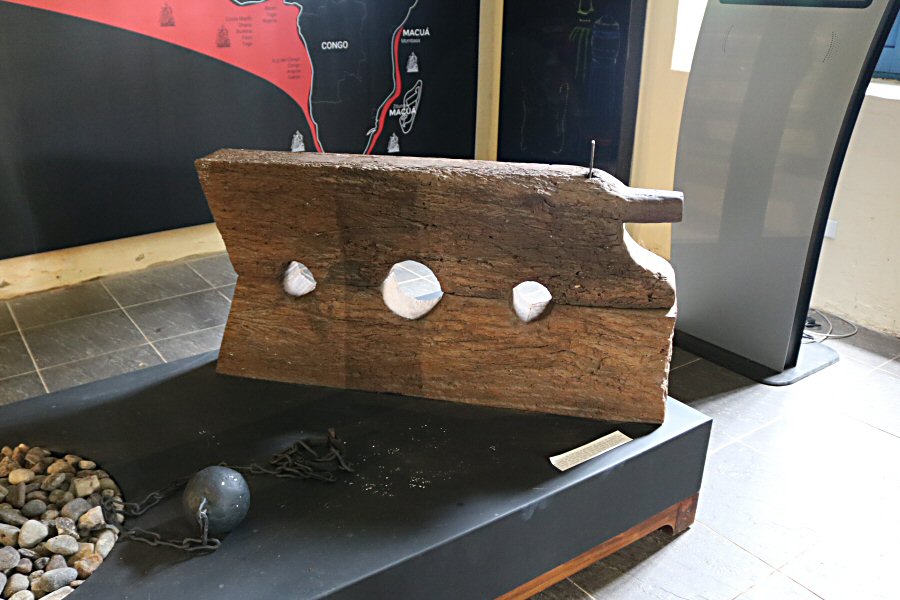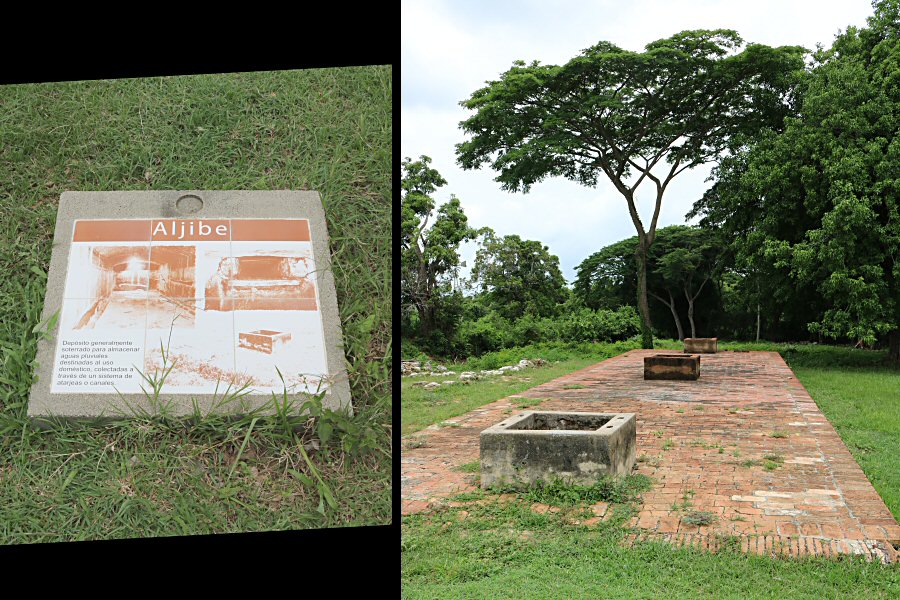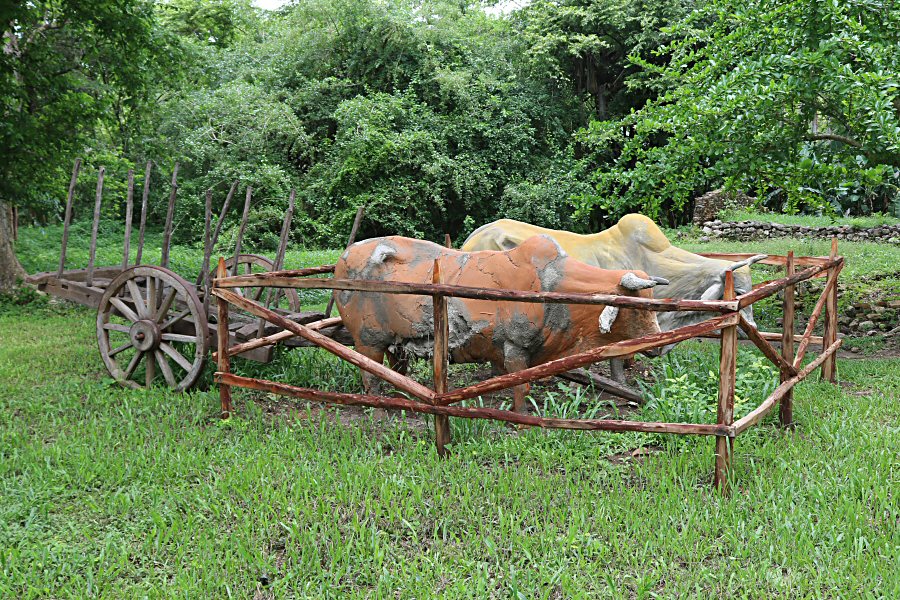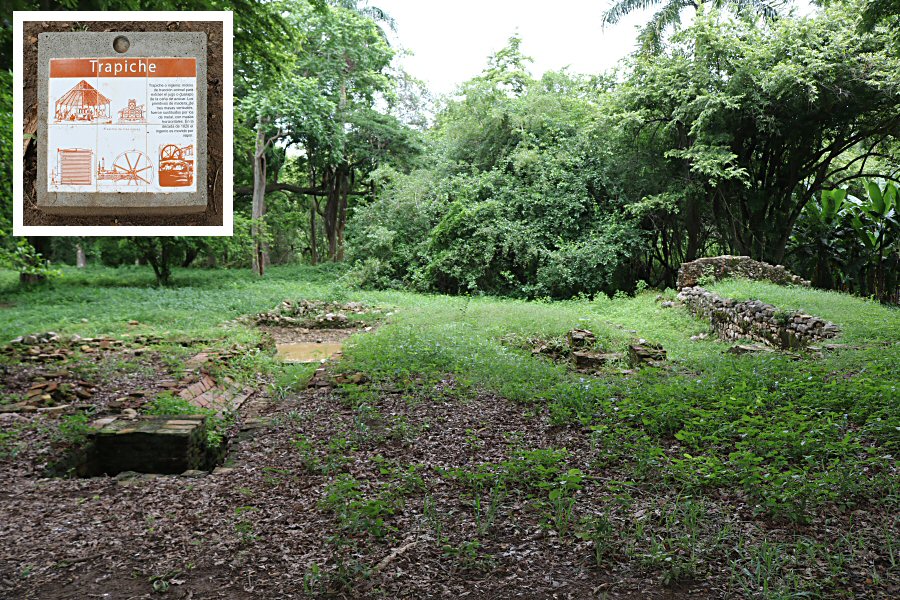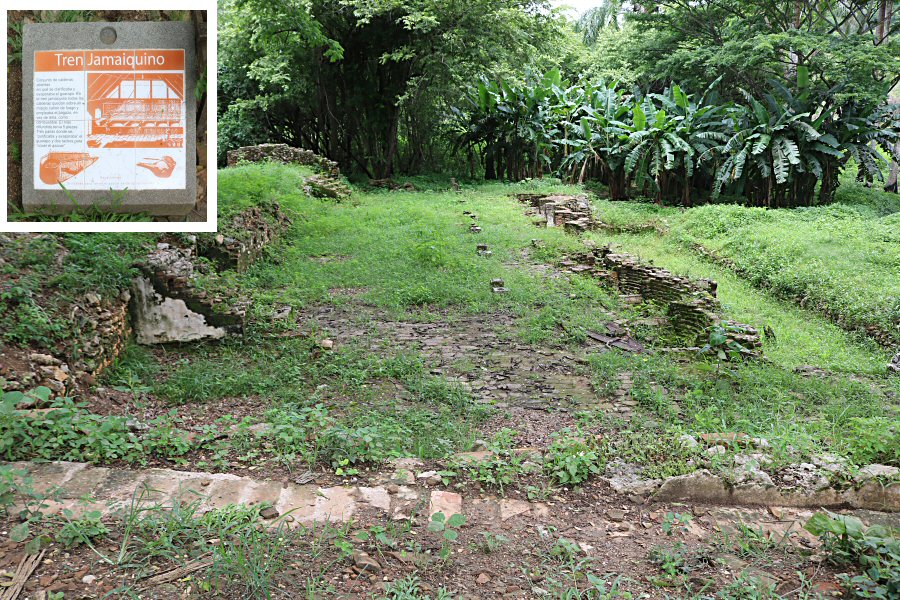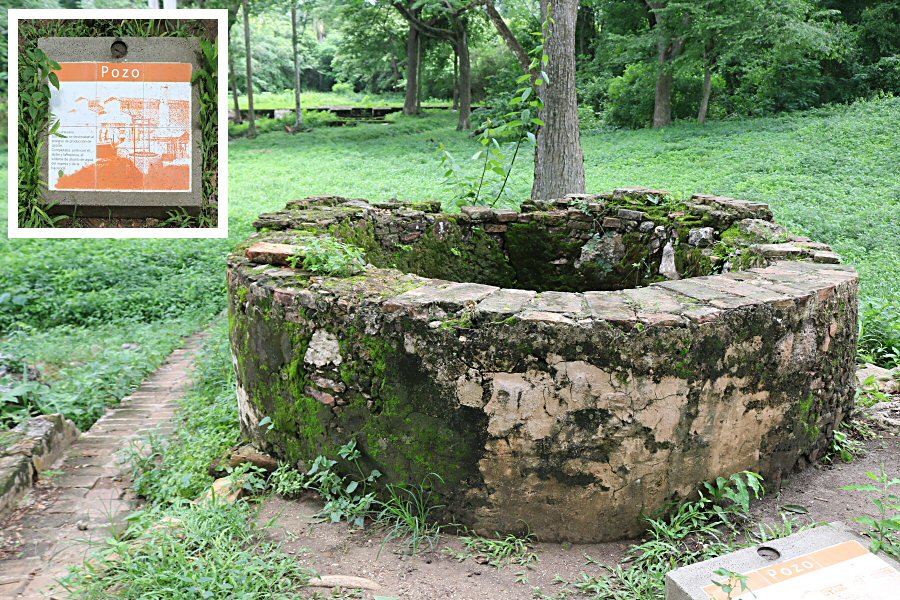
Architectural Features and The Museum
The layout of the dwelling house, in terms of sitting on a rectangular base, the arrangement of the rooms and their relationship with each other, is more or less like the plan of the mansion in Guáimaro and Manaca-Iznaga sugar mills. Its floor plan consists of two sections. There are 5 rooms in the first section and 3 rooms in the second section. The central area is connected to the second section through two arches.
At the back there is a gallery with wooden forks that corresponds to the central area of the second section. It has rooms on each side whose access is through a single opening towards the corridor.
The house is entered through a large wooden door with spear-like carvings on the inside which was a common motif in Trinidad in the first decades of the 19th century. The portal with a flat roof and two other accesses at both ends, had windows protected by turned wooden balusters.
Today, the rooms of the dwelling house have been converted into a museum where the remains of San Isidro de los Destiladero are exhibited. The model in the museum, showing the buildings in the farm, helps to visualize the functioning of that time. The wooden mechanism and metal handcuffs with which the African slaves were punished strikingly show the pain suffered in these lands.
After the museum, you take a short tour in the garden by following the floor signs with explanations about the ruins in the garden. Soon you will see an underground tank, a cistern, used to store rainwater, usually for domestic use, where the water is collected through a drainage system or channels.
The bell tower in the garden, painted in light pink, with an impeccable neoclassical layout, was used to announce the start and the end of the work, as well as as a watchtower. It is rectangular in shape and has three floors.
Next to this tower, you will find the vestiges of the entire hydraulic system, built on the basis of thick walls and stone buttresses, whose vital function would be to dam and channel the waters of the stream that fed the entire manufacturing process. The robust structure, and the ingenious system, are comparable with the most famous hydraulic systems of classical European cultures.
There are also remains of walls belonging to a sugar mill used in purification work in the garden. Clay or brass containers were placed inside the rectangular building, where the separation of crystallized sugar and honey was carried out. The process is called cleansing and lasts between 30 and 50 days.
Next to it, you will see the remains of a sugar mill (trapiche). A trapiche is a mill made of wooden rollers used to extract juice from fruit, originally olives, and since the Middle Ages, sugar cane as well. The mill was powered by animal traction to extract juice or guarapo from sugar cane. Wooden parts were replaced by metal ones over time. In the 1820s the mill was powered by steam.
The San Isidro sugar mill was not a highly mechanized enterprise, as it was founded at a time when sugar production from sugar cane relied mainly on the labor of the African slaves. However, the so-called "Jamaica train" in the San Isidro sugar mill which consisted of a system of five boilers exposed to the fire of a single furnace, was a complete revolution in sugar production. After repeatedly boiling the guarapo, the "Jamaican train" allowed to obtain sugar crystals.
The so-called "Jamaican train" that is still an intact structure that made up the sugar cooking system, was established between masonry walls and brick vaults and inserted in "the power house" as in every mill.
There were a set of open boilers in the trains in which the guarapo was clarified and evaporated. On the "Jamaican train" all the boilers were on the same fire cannon and used bagasse, instead of firewood, as fuel. Firewood was a material that in those years was becoming scarce as a result of intense deforestation. There were 5 boilers. In three pans the guarapo was "purified and evaporated" and two containers were used to "cook the sugar".
The name lends itself to confusion, because it seems to indicate that it came from Jamaica. However, it had already been implemented as a French system in 1800's. Its great advantage over the fire trains previously used in Cuba based on the saving of fuel. Hence, it was a vital contribution, a hopeful advance in times of crisis in the industry before the abolition of slavery.
The layout of the dwelling house, in terms of sitting on a rectangular base, the arrangement of the rooms and their relationship with each other, is more or less like the plan of the mansion in Guáimaro and Manaca-Iznaga sugar mills. Its floor plan consists of two sections. There are 5 rooms in the first section and 3 rooms in the second section. The central area is connected to the second section through two arches.
At the back there is a gallery with wooden forks that corresponds to the central area of the second section. It has rooms on each side whose access is through a single opening towards the corridor.
The house is entered through a large wooden door with spear-like carvings on the inside which was a common motif in Trinidad in the first decades of the 19th century. The portal with a flat roof and two other accesses at both ends, had windows protected by turned wooden balusters.
Today, the rooms of the dwelling house have been converted into a museum where the remains of San Isidro de los Destiladero are exhibited. The model in the museum, showing the buildings in the farm, helps to visualize the functioning of that time. The wooden mechanism and metal handcuffs with which the African slaves were punished strikingly show the pain suffered in these lands.
After the museum, you take a short tour in the garden by following the floor signs with explanations about the ruins in the garden. Soon you will see an underground tank, a cistern, used to store rainwater, usually for domestic use, where the water is collected through a drainage system or channels.
The bell tower in the garden, painted in light pink, with an impeccable neoclassical layout, was used to announce the start and the end of the work, as well as as a watchtower. It is rectangular in shape and has three floors.
Next to this tower, you will find the vestiges of the entire hydraulic system, built on the basis of thick walls and stone buttresses, whose vital function would be to dam and channel the waters of the stream that fed the entire manufacturing process. The robust structure, and the ingenious system, are comparable with the most famous hydraulic systems of classical European cultures.
There are also remains of walls belonging to a sugar mill used in purification work in the garden. Clay or brass containers were placed inside the rectangular building, where the separation of crystallized sugar and honey was carried out. The process is called cleansing and lasts between 30 and 50 days.
Next to it, you will see the remains of a sugar mill (trapiche). A trapiche is a mill made of wooden rollers used to extract juice from fruit, originally olives, and since the Middle Ages, sugar cane as well. The mill was powered by animal traction to extract juice or guarapo from sugar cane. Wooden parts were replaced by metal ones over time. In the 1820s the mill was powered by steam.
The San Isidro sugar mill was not a highly mechanized enterprise, as it was founded at a time when sugar production from sugar cane relied mainly on the labor of the African slaves. However, the so-called "Jamaica train" in the San Isidro sugar mill which consisted of a system of five boilers exposed to the fire of a single furnace, was a complete revolution in sugar production. After repeatedly boiling the guarapo, the "Jamaican train" allowed to obtain sugar crystals.
The so-called "Jamaican train" that is still an intact structure that made up the sugar cooking system, was established between masonry walls and brick vaults and inserted in "the power house" as in every mill.
There were a set of open boilers in the trains in which the guarapo was clarified and evaporated. On the "Jamaican train" all the boilers were on the same fire cannon and used bagasse, instead of firewood, as fuel. Firewood was a material that in those years was becoming scarce as a result of intense deforestation. There were 5 boilers. In three pans the guarapo was "purified and evaporated" and two containers were used to "cook the sugar".
The name lends itself to confusion, because it seems to indicate that it came from Jamaica. However, it had already been implemented as a French system in 1800's. Its great advantage over the fire trains previously used in Cuba based on the saving of fuel. Hence, it was a vital contribution, a hopeful advance in times of crisis in the industry before the abolition of slavery.
